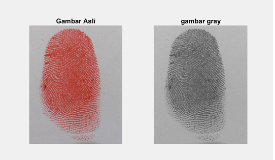Identification of fingerprint image with Minkowski distance algorithm approach
DOI:
https://doi.org/10.12928/bamme.v3i2.9949Keywords:
Data analysis, Fingerprint identification, Minkowski distance, System securityAbstract
In the digital era, fingerprint identification plays a critical role in information technology administration. Various studies have been conducted to improve the fingerprint identification process, but there are still cases of identification failures that are fatal. This research discusses fingerprint identification with the Minkowski distance method. The data of fingerprints are taken from Mathematics students and the Kaggle site. Data analysis includes the steps of image retrieval, dimensioning, conversion to grayscale, pattern matching, and accuracy measurement. Results show an improvement in data accuracy with a structured approach to data capture and preprocessing. Results from primary data obtained an accuracy of 56.67% while from secondary data obtained an accuracy of 93%.
References
Arifandi, M. (2019). Prototype Sistem Keamanan Pintu Menggunakan Sidik Jari (Fingerprint) Berbasis Arduino Uno ATMega328 dan SMS Gateway. https://www.researchgate.net/publication/340165694
Aziz, N. (n.d.). Pemanfaatan teknologi internet dalam pendidikan.
Emelda. (n.d.). Pengaruh Absensi Fingerprint dan Sanksi Hukuman Terhadap Disiplin Kerja Pegawai Pada Dinas Perdagangan Provinsi Sumatera Selatan. STIE Rahmaniyah Sekayu.
Gani, A. G. (n.d.). Pengenalan teknologi internet serta dampaknya.
Gusri, M., Dan, A., & Kadarisman, Y. (n.d.). Penggunaan Teknologi Internet Dikalangan Mahasiswa Fakultas Ilmu Sosial Dan Ilmu Politik Universitas Riau.
Hartono, B., Eniyati, S., & Hadiono, K. (2023). Perbandingan Metode Perhitungan Jarak pada Nilai Centroid dan Pengelompokan Data Menggunakan K-Means Clustering. Jurnal Sistem Komputer Dan Informatika (JSON), 4(3), 503. https://doi.org/10.30865/json.v4i3.6021
Hermawan, D., Ullah, A., & Faizal, A. (2023). Rancang Bangun Keamanan Kotak Amal dengan Akses Fingerprint Menggunakan ESP32-Cam dan Telegram Berbasis IOT. 7(3), 1013–1021. https://doi.org/10.30865/mib.v7i3.6252
Kasus Cybercrime Dengan Studi Kasus Hacker Bjorka Terhadap Pembocoran Data Zaki Rizaldi, A. M., Dwi Putra, R., Ul Hosnah, A., & Zaki Rizaldi, M. (n.d.). Analisis Kasus Cybercrime Dengan Studi Kasus Hacker Bjorka Terhadap Pembocoran Data. http://jurnal.um-tapsel.ac.id/index.php/justitia
Khairunnisa, A., Putri Efendy, M., Zamri, M., & Tusakdiyah, S. H. (n.d.). Aplikasi Pendeteksi Gejala Penyakit Jantung Menggunakan Metode Minkowski Distance Dengan Citra Matlab (Vol. 3, Issue 1).
Mayamin, M., & Usuluddin, L. (2023). Pengaruh Absensi Sidik Jari (Finger Print) terhadap Disiplin Kerja Pegawai. Remik, 7(1), 602–609. https://doi.org/10.33395/remik.v7i1.12091
Nishom, M. (2019). Perbandingan Akurasi Euclidean Distance, Minkowski Distance, dan Manhattan Distance pada Algoritma K-Means Clustering berbasis Chi-Square. Jurnal Informatika: Jurnal Pengembangan IT, 4(1), 20–24. https://doi.org/10.30591/jpit.v4i1.1253
Nuriadin, A., Dyan Nofia Harumike, Y., Tana Sanggamu, D. (2021). Sejarah perkembangan dan implikasi internet pada media massa dan kehidupan masyarakat. SELASAR KPI: Referensi Media Komunikasi Dan Dakwah, 1(1). https://ejournal.iainu-kebumen.ac.id/index.php/selasar/index
Nuriadin, A. Y. D. N. (2021). Sejarah Internet di Indonesia.
Nurliza, N. N., & Widodo, E. et al. (2018). Penerapan euclidean distance pada pengenalan pola citra sidik jarI.
Pradana, I. H. (2017). Klasifikasi citra sidik jari berdasarkan enam tipe pattern menggunakan metode euclidean distance.
Safwandi, & Muthmainnah. (n.d.). Sistem Pendeteksi Terjemahan Kifayatul Muhtadi Ke Dalam Bahasa Indonesia Menggunakan Metode Minkowski Distance.
Thant, A. A., & Aye, S. M. (2020). Euclidean, Manhattan and Minkowski Distance Methods For Clustering Algorithms. International Journal of Scientific Research in Science, Engineering and Technology, 553–559. https://doi.org/10.32628/ijsrset2073118

Downloads
Published
Issue
Section
License
Copyright (c) 2023 Wisnu Catur Rachmad Tulloh, Dian Eka Wijayanti

This work is licensed under a Creative Commons Attribution-ShareAlike 4.0 International License.
Authors who publish with this journal agree to the following terms:
- Authors retain copyright and grant the journal right of first publication with the work simultaneously licensed under Creative Commons Attribution License that allows others to share the work with an acknowledgement of the work's authorship and initial publication in this journal.
- Authors are able to enter into separate, additional contractual arrangements for the non-exclusive distribution of the journal's published version of the work (e.g., post it to an institutional repository or publish it in a book), with an acknowledgement of its initial publication in this journal.
- Authors are permitted and encouraged to post their work online (e.g., in institutional repositories or on their website) prior to and during the submission process, as it can lead to productive exchanges, as well as earlier and greater citation of published work (See The Effect of Open Access).



